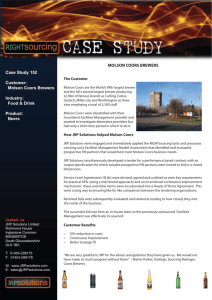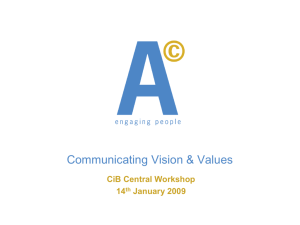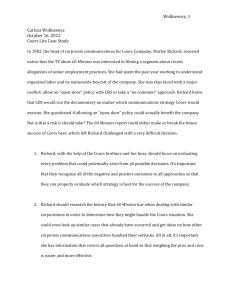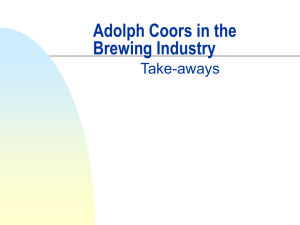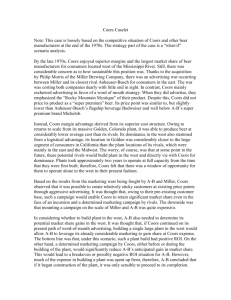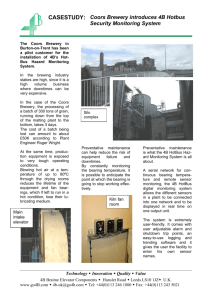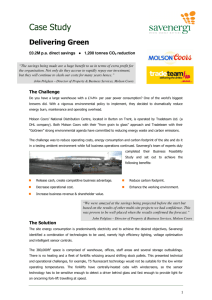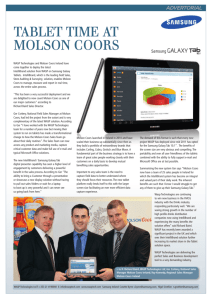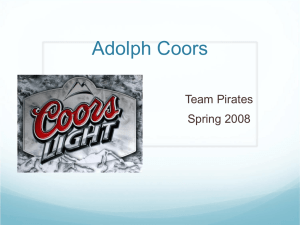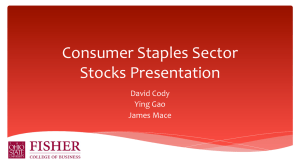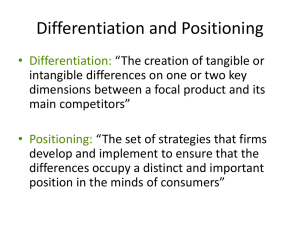Coors Take Aways
advertisement
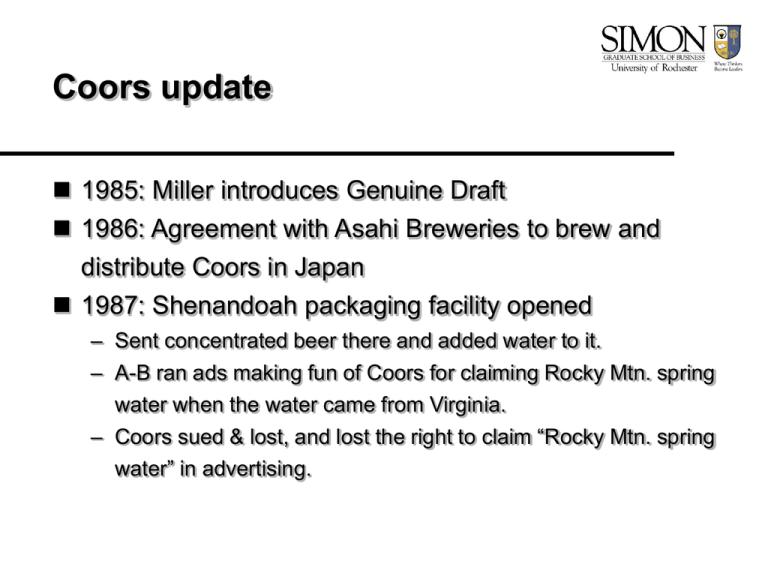
Coors update 1985: Miller introduces Genuine Draft 1986: Agreement with Asahi Breweries to brew and distribute Coors in Japan 1987: Shenandoah packaging facility opened – Sent concentrated beer there and added water to it. – A-B ran ads making fun of Coors for claiming Rocky Mtn. spring water when the water came from Virginia. – Coors sued & lost, and lost the right to claim “Rocky Mtn. spring water” in advertising. Coors update (cont’d) 1990: Purchase of a Stroh’s brewery in Memphis 1990: Coors rises to #3 among US brewers 1993: New president and COO hired from Frito-Lay; first non-Coors family member to be president 1996: A-B has captured 48% of US beer sales 2002: Coors acquires 2nd largest UK Brewer, Carling 2004: Coors outbids SAB/Miller for Molson, Canada’s largest brewer 2005: Molson Coors is world’s 5th largest brewer 3rd largest in U.S. Coors takeaways: Competition Need to understand industry and nature of competition to make good strategic decisions What matters for competition? Here, – transportation costs => geography – scale economies – advertising Market dynamics: what determines market structure in the long run? – Look at MES/market size – Here also: escalation of advertising expenditures Cross-functional perspective Assessing a firm’s strategy and its options requires looking at all functions/activities: – Procurement – Production – Marketing – Distribution – Often also: organizational structure, HR policies, financial position etc. External and internal fit Strategy can be seen as link between firm and its environment External fit: how well do firm’s activities fit with external market forces? Internal fit: how well do various activities fit with one another? – An activity system is an important tool to assess internal fit – 70s: good match between regional strategy and choices in production and marketing; – 80s: mismatch between activities and national strategy Assessing competitive advantage Look at costs and (customers’) benefits; prices depend on those – Cost drivers (e.g. scale economies, transportation costs) => cost advantage? – Benefit drivers (freshness?, limited availability) => benefit advantage? Try to quantify each, given available data Useful (but too simple) distinction: “cost” vs. “differentiation” strategy Sustainability of a competitive advantage Having a competitive advantage does not mean it’s sustainable! Two kinds of threats: 1. Changes in the market (e.g. increasing importance of advertising) 2. Efficient markets principle at work: if you’re making profits, others will try to go after you! Strategy and commitment Strategic decisions are often hard to reverse, due to – – – – Sunk costs Late-mover disadvantages Delays in implementing changes Organizational inertia Successful strategic planning requires thinking things through ahead of time 1. Monitor/anticipate changes in the market. 2. Try to anticipate others’ moves Others’ moves can quickly change your position in market, or force you to change it
